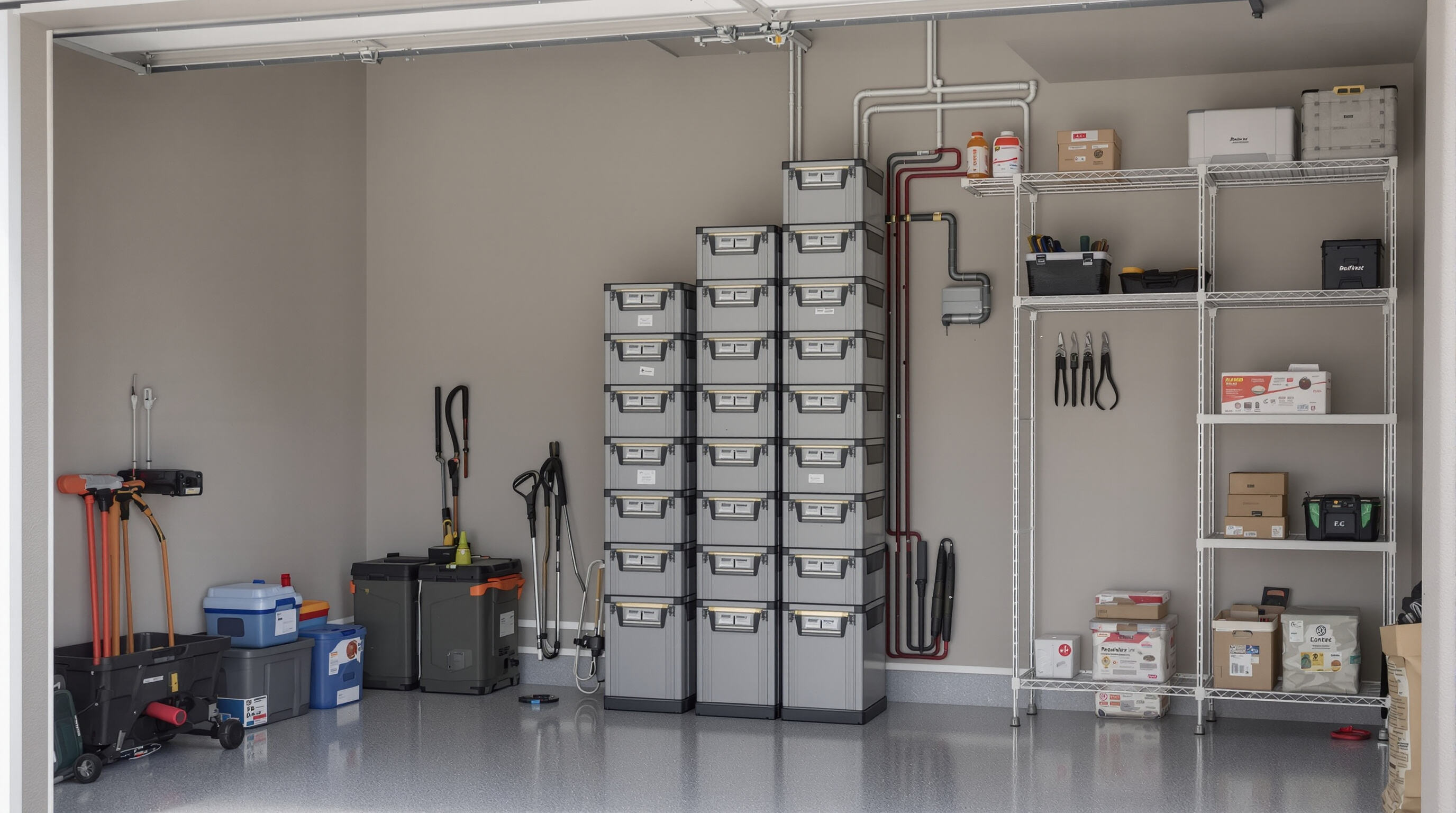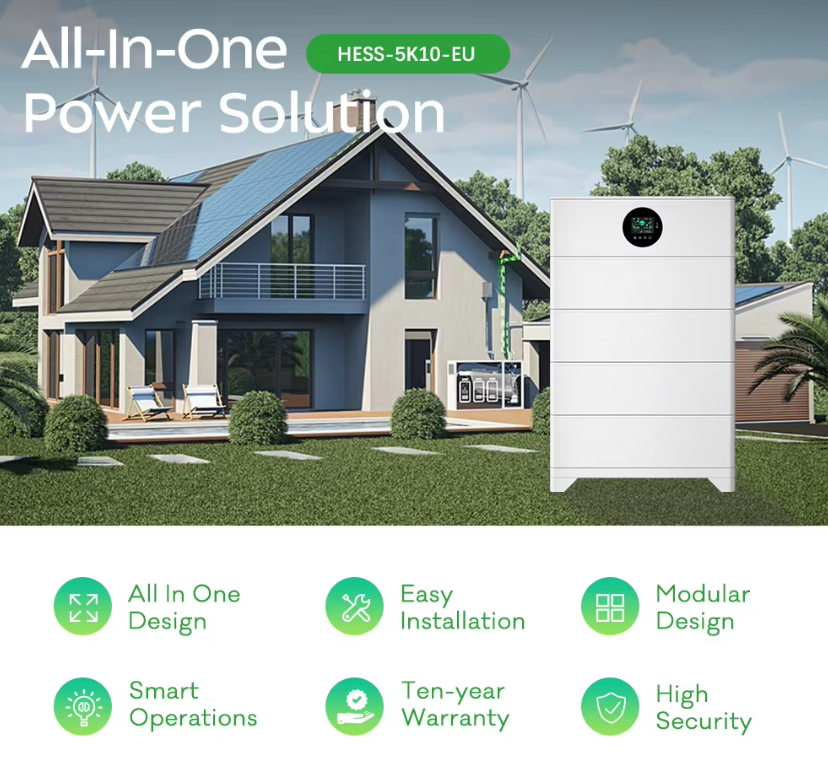Scalability: Modular Expansion for Growing Energy Needs
Modular design enables flexible system growth in small-scale storage
Stackable battery systems revolutionize energy management through modular architectures that adapt to evolving needs. Homeowners can start with a base unit (5kWh) and add modules incrementally, achieving 40% lower energy waste compared to fixed-capacity alternatives (NREL 2023). This phased approach eliminates oversizing while maintaining compatibility with solar arrays and backup generators.
Expand capacity from 5–100kWh using stackable battery configurations
Scaling occurs in 5kWh increments, matching household consumption patterns:
- 25kWh powers essential appliances during outages
- 50kWh supports EV charging + basic home needs
-
100kWh enables full off-grid capability
Installers report 92% customer satisfaction with gradual expansion workflows, compared to 68% for traditional single-unit installations.
Align energy storage growth with residential demand and usage patterns
According to recent energy assessments, most homes start off needing around 20 kilowatt hours or less at first. But things change when people bring electric cars into the mix or install those new heat pump systems for their homes. Suddenly the demand jumps up to about 45 kWh. That's where stackable energy solutions come in handy. These systems allow homeowners to time their system expansions with major life changes. Like when someone finally buys that long talked about electric vehicle or decides it's time to upgrade their old heating setup. About two thirds of folks who go solar end up wanting more storage capacity somewhere between year three and seven after they first installed their panels. Makes sense really since our energy needs tend to grow alongside our lifestyles.
Future-proof investments with plug-and-play stackable battery units
Modern stackable designs feature tool-free connectors and unified management software, reducing expansion costs by 30–50% compared to legacy systems. Manufacturers now guarantee 10-year performance parity between original and added modules, eliminating risks of compatibility obsolescence and ensuring long-term reliability.
Cost Efficiency: Lower Entry Barriers and Long-Term Savings
Start Small: Reduce Upfront Costs With Modular Stackable Battery Systems
Stackable battery systems enable homeowners to begin with as little as 5kWh—sufficient to power critical circuits during outages—slashing upfront costs by 40–60% compared to traditional single-unit installations (2023 energy storage benchmarks). This modular approach avoids overspending on unused capacity while allowing seamless future upgrades aligned with changing energy demands.
Incremental Expansion Lowers Total Cost of Ownership Over Time
When battery systems grow along with how much energy people actually need, they help cut down on long term costs because folks can invest bit by bit instead of all at once. Take for instance someone starting with a 10kWh setup and expanding it to 20kWh after five years. According to research from NREL in 2023, this approach saves around 32 percent compared to buying everything right away. This kind of flexible growth works great during seasons when demand changes, or when big transitions happen such as getting an electric vehicle or installing a heat pump system.
Financial Benefits of Avoiding Over-Provisioning in Early Installations
Modular design prevents the $4,700 average overspend common in conventional battery installations due to overestimated initial needs. With precise 2–3kWh increments, households only pay for what they use. Utilities increasingly offer demand-response incentives for scalable storage, creating recurring revenue streams that help offset expansion costs.
Space and Installation Advantages in Compact Residential Settings

Maximize limited space with vertically stackable battery units
When it comes to saving space, stackable battery systems are game changers because they grow upwards rather than taking over horizontal space. Most models come with built-in brackets that let homeowners stack them safely as many as five units high without tipping over. This vertical arrangement means these batteries fit right into whatever space already exists under the house or in a corner of the garage. Regular single piece batteries just eat up too much room, especially when people need storage for tools or holiday decorations. The modular approach keeps those precious square feet free for other stuff besides just sitting there collecting dust.
Ideal for urban homes and constrained environments
Urban dwellings typically have 40% less outdoor space than suburban homes (U.S. Energy Data 2023), making vertical scalability essential. Stackable configurations fit into garages, mechanical rooms, or climate-controlled closets—often underutilized spaces in city residences. Their compact form also benefits multi-family buildings and historic properties where structural modifications are restricted.
Simplified installation and maintenance for small-scale modular systems
Each stackable battery arrives pre-configured for daisy-chain connections, cutting installation time by 60% compared to traditional parallel wiring. Maintenance is equally efficient: technicians can test, replace, or upgrade individual modules without dismantling the entire array. The plug-and-play design supports hot-swappable components, minimizing service disruptions and ensuring continuous power availability.
Seamless Integration and System Flexibility with Solar ESS
Stackable batteries enhance solar energy storage by enabling dynamic adjustments without complex reengineering. Their modular nature supports incremental upgrades, helping homeowners optimize self-consumption and adapt to shifting energy needs.
Easily expand existing solar+storage systems using stackable batteries
Expanding an operational solar+storage system once required costly hardware replacements. Now, stackable lithium batteries allow installers to add new units via standardized connectors, preserving existing wiring and inverter compatibility. This method reduces installation time by up to 40% compared to conventional upgrades while maintaining uninterrupted energy access.
Support for hybrid setups: AC/DC coupling and grid-tied or off-grid modes
Today's stackable systems work with either AC or DC coupling setups, which means they fit into all sorts of energy plans. When homeowners want to save extra solar power, DC coupling gives them around 5 to 8 percent better efficiency compared to other methods. Meanwhile, AC coupling lets them add those grid stability features their system might need. The best part? These systems switch back and forth between being connected to the grid and going completely off grid when needed. That makes homes much more resilient during power outages and works well no matter where someone lives or what local regulations apply in their area.
Interoperability with modern energy storage systems (ESS) and inverters
Leading stackable batteries use CAN/RS485 communication protocols, enabling integration with 90% of hybrid inverters and energy management platforms. This standardization allows real-time monitoring through manufacturer-agnostic software and supports advanced functions such as time-of-use optimization, peak demand charge reduction, and solar self-consumption maximization—future-proofing systems against evolving technologies.
Performance and Reliability: Density, Lifespan, and Real-World Results
High Energy Density and Long Cycle Life in Stackable Lithium Battery Systems
Modern stackable lithium batteries achieve energy densities exceeding 250 Wh/kg, delivering compact storage with sustained performance—critical for space-constrained installations. These systems retain over 80% capacity after 5,000 cycles (Journal of Power Sources 2023), thanks to advancements in electrode materials and thermal management detailed in the 2024 Solid Electrolytes Report.
Case Study: Stackable Batteries Powering Off-Grid Homes Over 5+ Years
A six-year trial involving 38 off-grid homes in Northern California showed stackable lithium systems maintained 92% capacity retention despite daily cycling. Participants reduced generator reliance by 84%, while gradually increasing storage from 10kWh to 35kWh over three years—demonstrating reliable long-term performance and practical scalability.
Advancements in Battery Chemistry Improving Longevity and Safety
Newer stackable units incorporate ceramic-reinforced separators and silicon-doped anodes, reducing degradation rates by 40% compared to 2020 models. These improvements align with UL 9540A safety standards, addressing fire risk and durability concerns in residential deployments and reinforcing consumer confidence in long-term system integrity.
FAQs
What is the benefit of a stackable battery system?
Stackable battery systems allow incremental expansion, reducing energy waste and cost compared to fixed-capacity systems. They're adaptable to growing energy needs and lifestyle changes.
How does modular scalability affect installation?
Modular scalability results in simpler and faster installation, with less space required than traditional systems. This is ideal for urban homes with limited outdoor space.
Can stackable batteries integrate with existing solar setups?
Yes, stackable batteries can be integrated into existing solar setups without complex reengineering, allowing for easy incremental upgrades.
What are the long-term reliability features of stackable battery systems?
Stackable systems feature tool-free connectors, unified management software, and guarantee performance parity, making them reliable for long-term use.
Table of Contents
- Scalability: Modular Expansion for Growing Energy Needs
- Cost Efficiency: Lower Entry Barriers and Long-Term Savings
- Space and Installation Advantages in Compact Residential Settings
- Seamless Integration and System Flexibility with Solar ESS
- Performance and Reliability: Density, Lifespan, and Real-World Results
- FAQs

